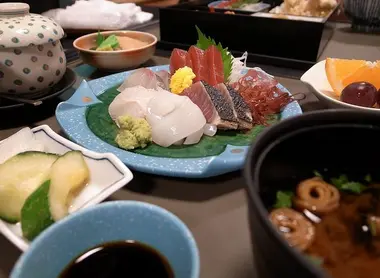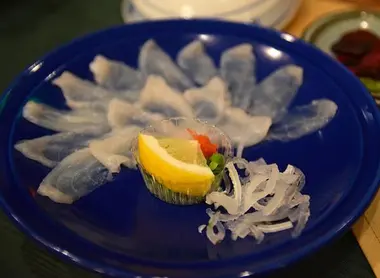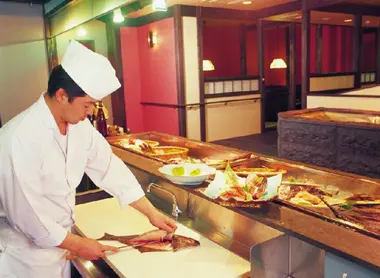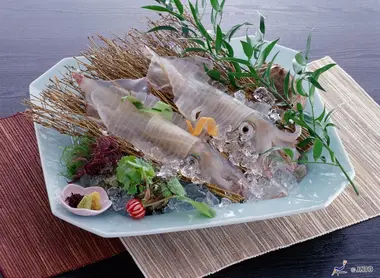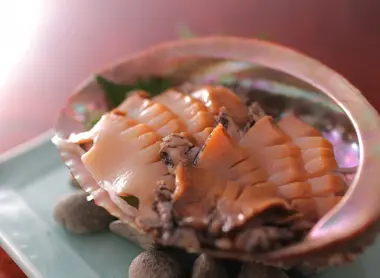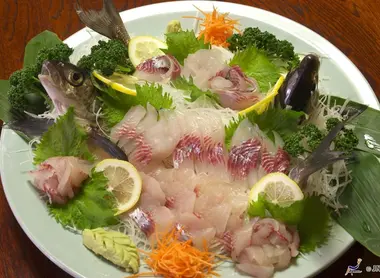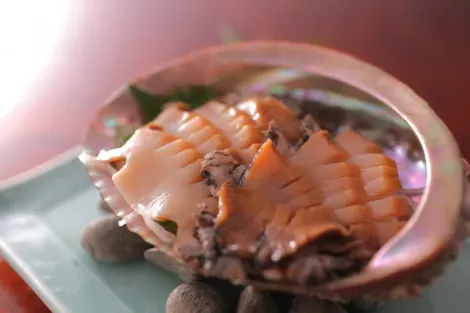The Art of Sashimi 刺身
The art of sashimi
As simple as it can appear to the naked eye, sashimi is a complex culinary art. From selecting the fish to the delicate slicing, nothing is left to chance in its preparation. Also known as sushi, sashimi is the ideal way to taste the best and freshest ingredients. In Japan, sashimi designates the cutting of the slices of fish as a culinary art.
The choice of sashimi fish
When talking about sashimi, it is often mistakenly referenced as simply slices of raw fish. However, sashimi is part of Japan's gastronomic heritage and includes not only the cutting but also the artistic aspect of the culinary composition of the fish.
The chef chooses the base ingredients of his sashimi with great care: it must always be extremely fresh. Sashimi isn't always slices of fish: it can also be slices of crustaceans or shellfish, such as shrimp or scallop. The fish most commonly used in sashimi are tuna, salmon, sea bream, mackerel, and dab.
In the Osaka region, fugu (pufferfish) is also used, which is toxic if not perfectly prepared! Only certain chefs are licensed to prepare and serve it, after qualifying for an official certification awarded by the state.
Read: Fugu, the poisonous pufferfish
Sashimi: an art form
The term sashimi means "cut body". Behind the simplicity of this dish hides lies know-how that requires years of training.
Not only are there special techniques for cutting fish (the art of precision), but specific techniques apply to different fish, revealing a particular texture, or even a different taste. The same fish prepared by two different chefs may look different and taste different depending on the cut!
Read also: How to eat sushi
Every fish is different, and there are no universal techniques for any fish. The knife used to prepare sashimi (usually large - about 30cm long) is of the essence, as is how the other hand manipulates the fish: all these details produce unique sashimi.
The most common technique is called hira-zukuri because it can be used on all types of fish. It's a method of cutting rectangular slices about 1 centimeter thick. A technique for producing finer slices is called usu-zukuri.
The hiki-zukuri technique isn't distinguished from the others by the thickness of the slicing, but by the arrangement of the slices - some fish needs to be handled as little as possible, so it's positioned directly after being cut. This is what makes the difference between hiki-zukuri and hira-zukuri. Many other techniques can be added to this list, but most importantly, sashimi is a complex art.
Serving sashimi
Sashimi is usually served with grated radish, celery, or white turnip. It can also be served with other raw vegetables, such as carrots or cucumber slices. A bowl of rice (not vinegared) and miso soup can be served with sashimi. When it comes to sauces, sashimi is most commonly served with wasabi and soy sauce, like sushi but other variations such as ponzu (tangy soy-based citrus sauce).
See: Wasabi
Sashimi can sell for extremely high prices, due to the quality of the ingredients. Some rare fish or those that sell at premium prices such as toro (fatty tuna) and ama-ebi (spot prawns) to name a few...
Where to eat sashimi in Japan?
Sashimi is best enjoyed in sushi restaurants. It is advisable to choose a rather upscale establishment, having access to better quality fish, and employing a recognized chef, to taste the best sashimi.
Discover some of our best places to eat sashimi in Tokyo and Kyoto.
Ichiba Sushi, Tokyo
This small restaurant is located within the new Toyosu Fish Market. The counter seating gives you a front-row seat to see the chefs in action. The restaurant specializes in bluefin tuna sashimi, and it is one of the few restaurants that serve the whole fish. Open from 7 am until 3 pm.
- Address: 6 Chome-6-1 Toyosu, Koto City, Tokyo 135-006
Sushiryori Inose, Tokyo
A friendly place with a warm atmosphere, here you can taste nigiri sushi, gunkan maki, and naturally, a wide variety of sashimi.
- Address: 2-20-2 Higashigotanda | 1f, Shinagawa, Tokyo Prefecture
Sushi Iwa, Kyoto
Not far from Kyoto station is the excellent Sushi Iwa. In this refined restaurant sashimi is king! You can taste the assortment of sashimi from 3000 yen (around $26/23€), but also shellfish, sea urchin, abalone, and even fugu!
- Address: 282 Nishitamamizucho Shimojuzuyamachi-dori Ainomachi Nishiiru, Shimogyo-ku, Kyoto 600-8155, Kyoto Prefecture
For further reading:

